Go wild for salmon
by Nick Rose, M.S., PCC Nutrition Educator
This article was originally published in July 2011

Salmon is without a doubt the most iconic food here in the Northwest and also one of the most nutrient-dense foods on the planet.
Many of us correctly identify salmon as a great source of omega-3 fatty acids; but did you know that wild-caught salmon also is the best dietary source of vitamin D? Did you know that salmon is one of the most reliable dietary sources of essential trace minerals such as iodine and selenium? Placing wild salmon on our dinner plates is a smart food choice for us here in the Northwest: It helps us to celebrate our local food culture, boosts the nutrient density of our diets, and may even make us smarter.
One of the primary omega-3 fatty acids found naturally in salmon is DHA, or docosahexaenoic acid. It’s incorporated into our brain cells, and research suggests it offers a protective effect against cognitive decline, dementia, and Alzheimer’s disease. DHA is so important for our brain cells that pregnant women with the highest levels of DHA in their bodies give birth to children with higher IQs — talk about brain food!
The other omega-3 fatty acid in salmon (abbreviated EPA — for eicosapentaenoic acid) is well-loved for reducing the inflammation, blood clots, and arrhythmias that are associated with heart disease and stroke risk.
A 4-ounce serving of wild Alaskan salmon contains more than two grams of these long chain omega-3 fatty acids. The same 4-ounce serving of wild salmon contains five times as much vitamin D as farm-raised salmon — so do yourself a favor and go WILD for salmon!
